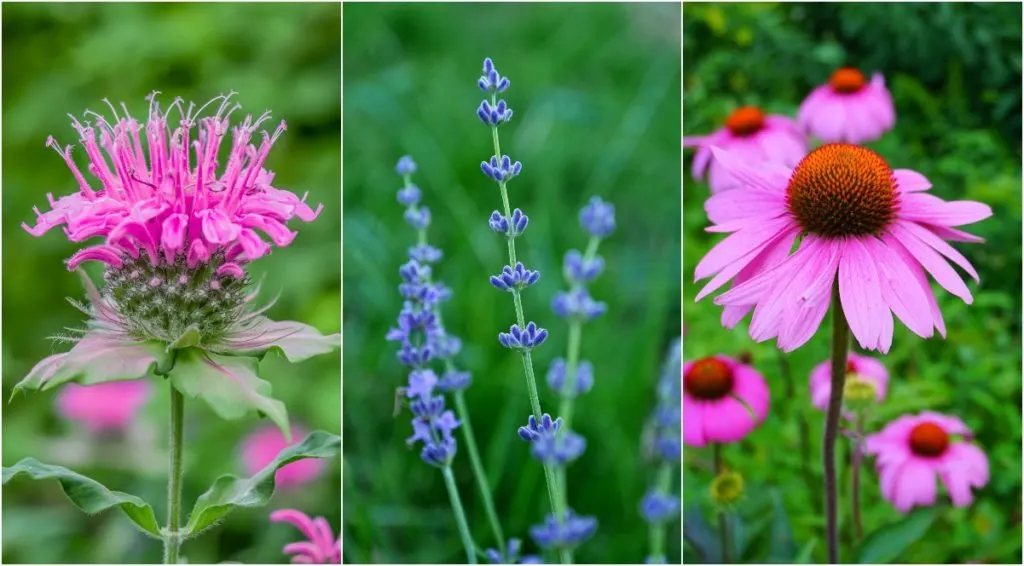
Is there a stubborn patch of soil in your garden where most plants seem to wither away? You could be faced with something all gardeners dread – low-quality soil.
As we know, rich, loamy soil is the goal. Sometimes, no matter what we do or how much money we spend on all the right fixes (and here are 15 things you can do), nothing seems to get our soil in the right condition.
But, there is an incredibly simple solution to this common problem: planting plants that will flourish in that stubborn spot.
Not only will this add some versatility to your garden, but most plants that do well in low-quality soil are also worry-free and easy to care for.
What is Low-Quality Soil?
Before we get to the plants, let’s look at what makes soil ‘low-quality’.
Soil quality is based on the levels of nutrients in the soil and its structure. The structure and textures of soil determine how well nutrients and water are retained and how freely they move through the soil. Low-quality soil tends to be either too sandy, or consist of too much clay.
Sandy soils have a dry, crumbly texture that refuses to stay compact, even when wet. The large, solid particles don’t allow for pockets to form where water and nutrients collect and hold on to, ultimately causing all the good stuff to drain out before plants can absorb them.
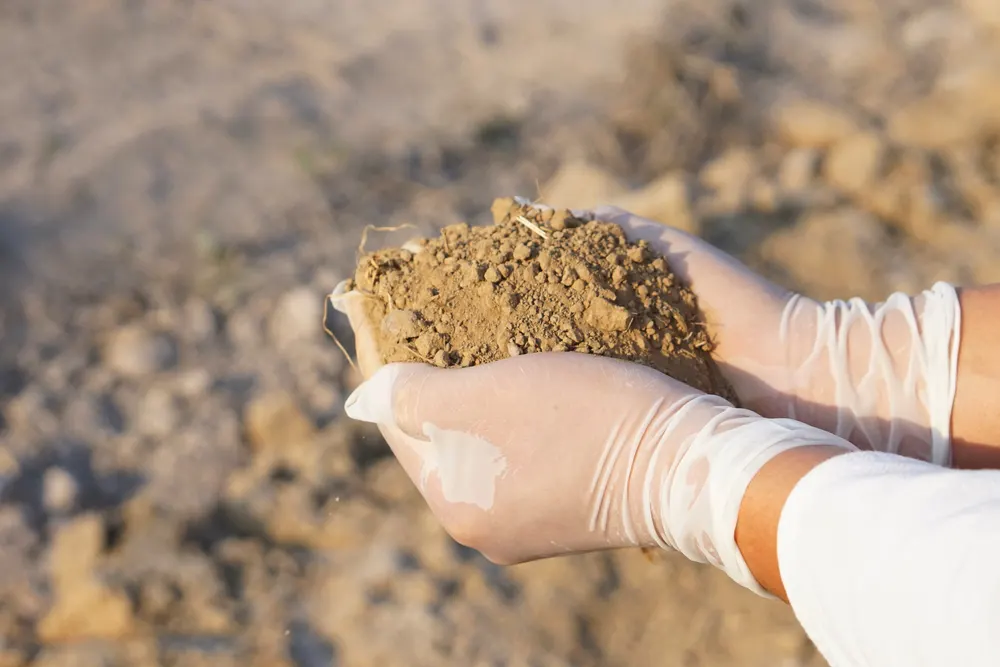
Clay soil, on the other hand, is quite sticky when wet. This is because there are many small particles of soil with very little space between them, causing water to sit in and on top of the soil. Unlike sandy soil, clay soil doesn’t drain at all, causing persistent pools of water around your plants.
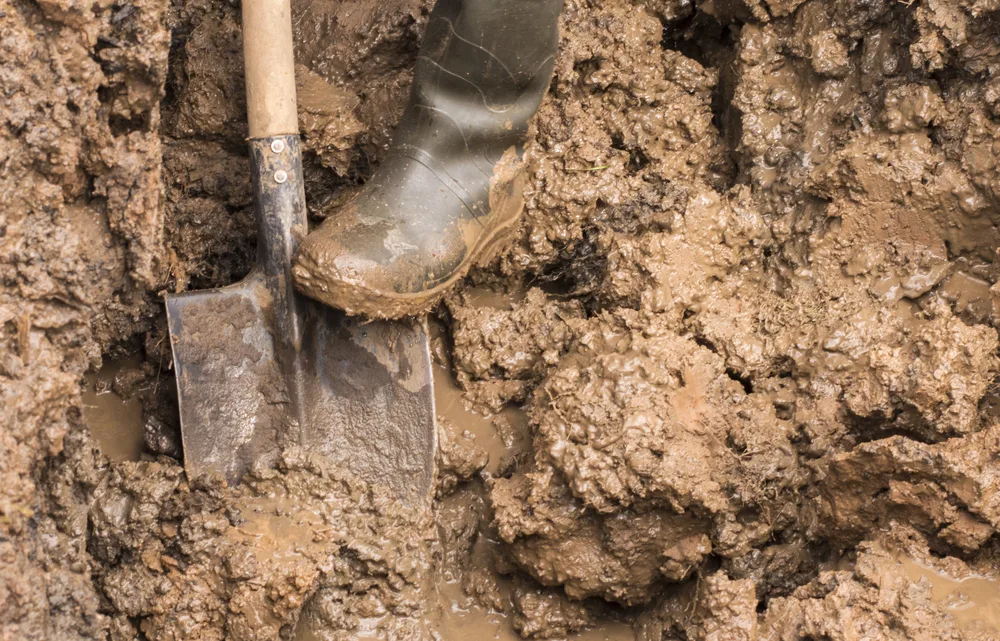
Good soil is somewhere between the above two extremes. Called loam soil, it has a crumbly texture but is sticky when wet. While it holds its shape when squeezed, it can easily be separated, unlike clay soil. Moisture is retained, but excess water drains easily in this type of soil.
Creating healthy soil in a tough spot can be a difficult and expensive exercise. Instead, plant the following plants that will thrive in that stubborn spot without issue.
1. Lavender
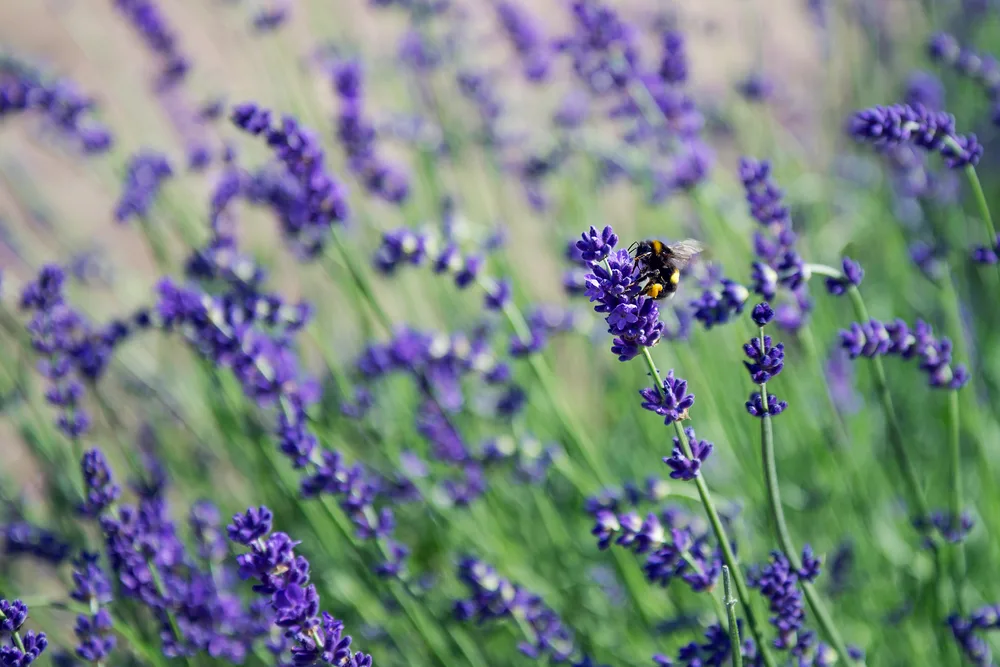
Many perennials do well in low-quality soil, especially lavender. Lavender is native to the dry, rocky regions of the Mediterranean, so it will surely appreciate that dry sandy soil patch in your garden.
This must-have plant attracts bees, butterflies and several other pollinators. The flowers are visually stunning, but their calming fragrance is even better.
Lavender grows well in almost all conditions, including drought. It grows best though in USDA zones 5-9. This hardy plant loves full sun and requires little water. Once its root system has established it grows to approximately three feet tall, making a statement in any garden.
2. Foxtail Lilies (Eremurus)
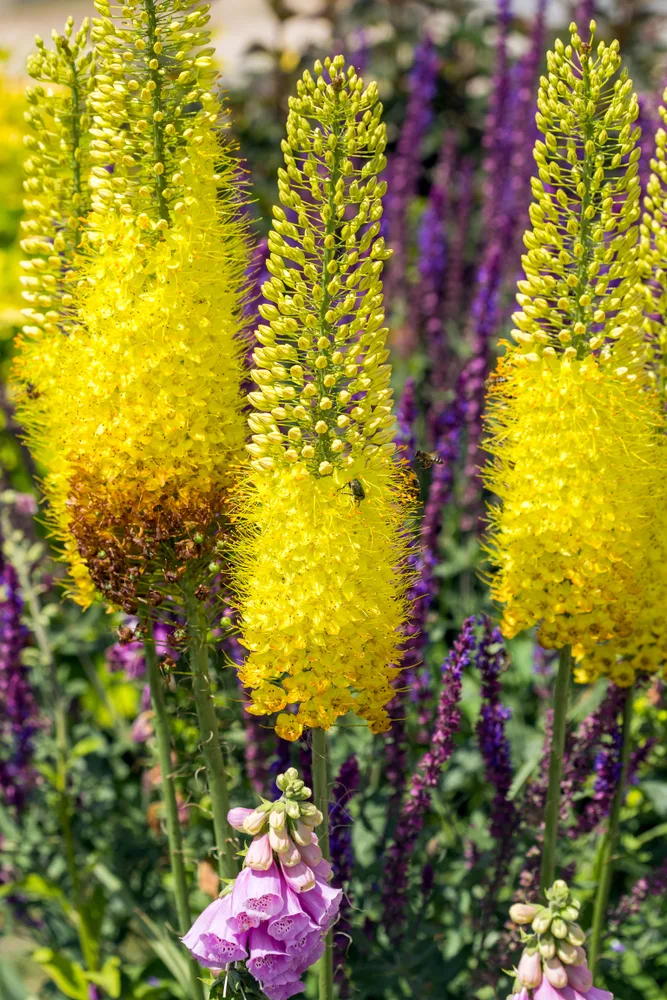
Another hardy perennial to consider for your sandy patch is Foxtail lilies or Desert candles. Like lavender, they brighten a garden with their impressive foxtail blooms that come in colors ranging from white to bright orange.
Foxtail lilies are low maintenance, needing very little water and plenty of sunlight. Once their root system has established, they grow relatively quickly. By late spring their bright flowers bloom, bringing life to your garden metaphorically and physically (as it attracts a variety of pollinators).
3. Lettuce
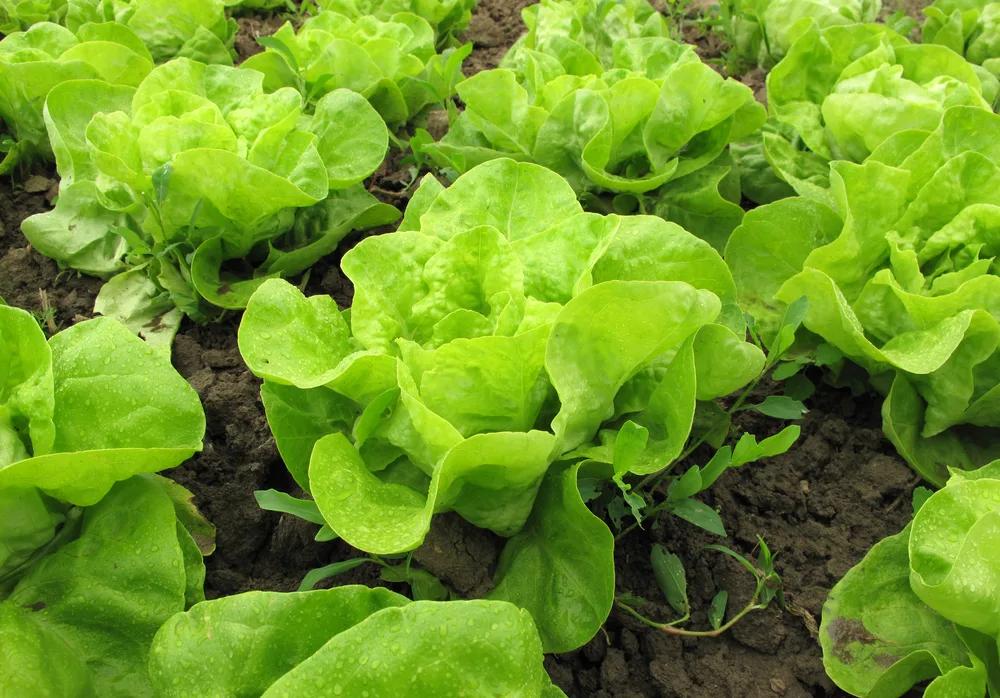
If you’re looking to grow something in your vegetable garden and a clay patch is getting in your way, lettuce will save the day.
Lettuce needs plenty of water and will appreciate the water retention abilities of clay. It also has a shallow root system that anchors better in clay soil versus loose loamy soil.
Lettuce grows well in full sun, but may tolerate shady spots. While it requires regular watering, the retention properties of clay soil mean you won’t have to water as often. It reaches maturity in just over a month, so you’ll be enjoying that fresh crunch in your salad in no time.
4. Yarrow (Achillea)
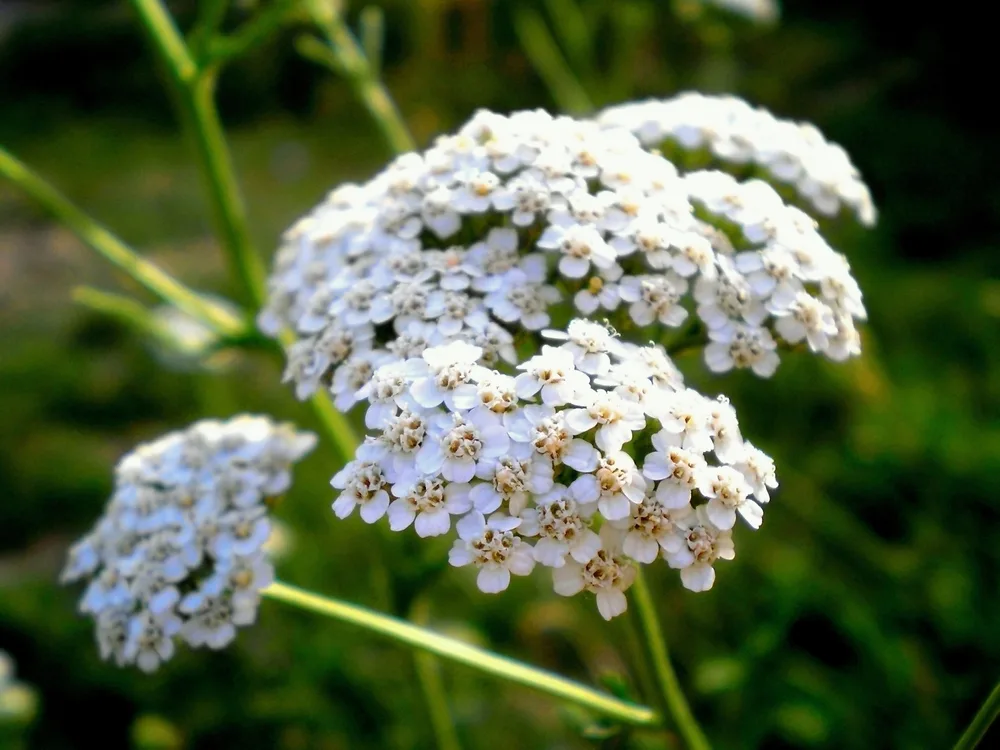
Yarrow, a member of the Aster or Composite family, is a hardy flower that actually benefits from poor quality soil.
Although the flowers are stunning, many consider them to be invasive weeds as they grow extremely quickly and spread like wildfire. Nutrient-rich soils boost growth and encourage this weed-like growth. So your poor quality soil, whether clay or sandy, will be perfect for this hardy flower.
Common yarrow does well in hot, humid climates and is drought tolerant (USDA Zone 3-9). As long as they get full sun, they will thrive in your garden. Come summertime, they will bloom, bringing beautiful pinks, whites, or yellows to your garden.
5. Perennial Sunflower (Helianthus)
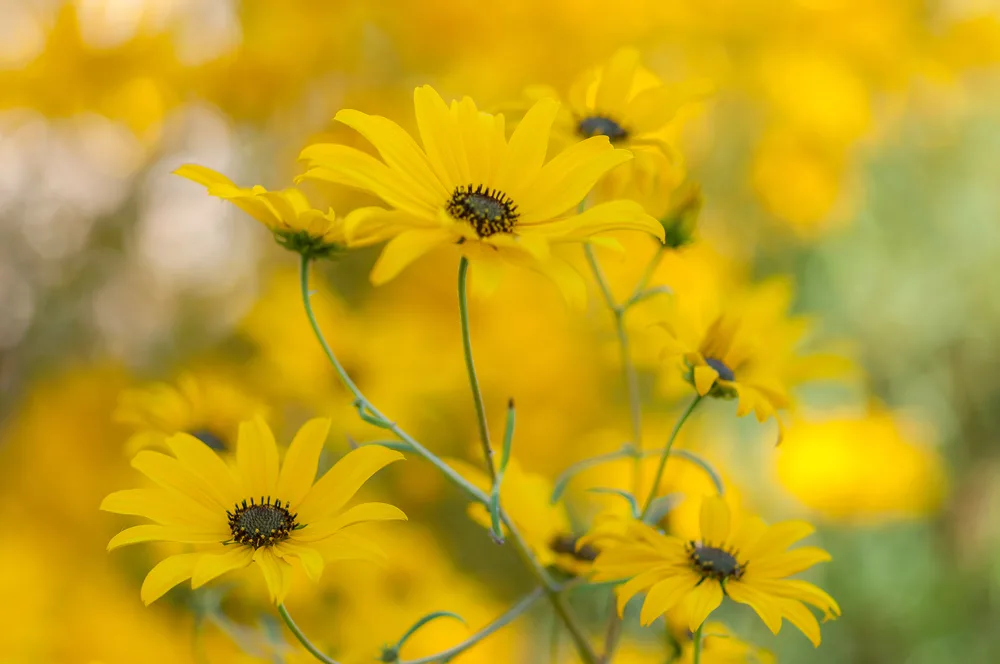
Perennial sunflowers are not thought of often, overshadowed by the common annual sunflower. However, these stunning, smaller beauties will wow just as much as annuals, while thriving heavy clay soils.
These sunflower varieties grow best in USDA zones 4-9 and will grow in almost any tough conditions. The best varieties to choose for exceptionally bad soil are the Swamp sunflower (Helianthus angustifolius) and the beach sunflower (Helianthus debilis).
As with all sunflowers, these enjoy as much sun as possible. During blooming season, they are bound to bring joy and pollinators to your garden with their beautiful yellow flowers.
6. Wild Bee Balm (Monarda fistulosa)

Wild bee balm is yet another easy-growing perennial that enjoys dry conditions. This native American plant is also known as bergamot and is considered a herb.
As a member of the mint family, it has several medical and culinary uses. Its leaves make for great cold-fighting teas. Its flowers are also edible, adding some excitement to your meals.
This flower loves full sun with partial shade. Bee balm grows best in USDA zones 4-9. It’s a thirsty plant but will appreciate the drainage of sandy soils. Water them frequently and they’ll thrive.
7. Rose of Sharon (Hibiscus syriacus)
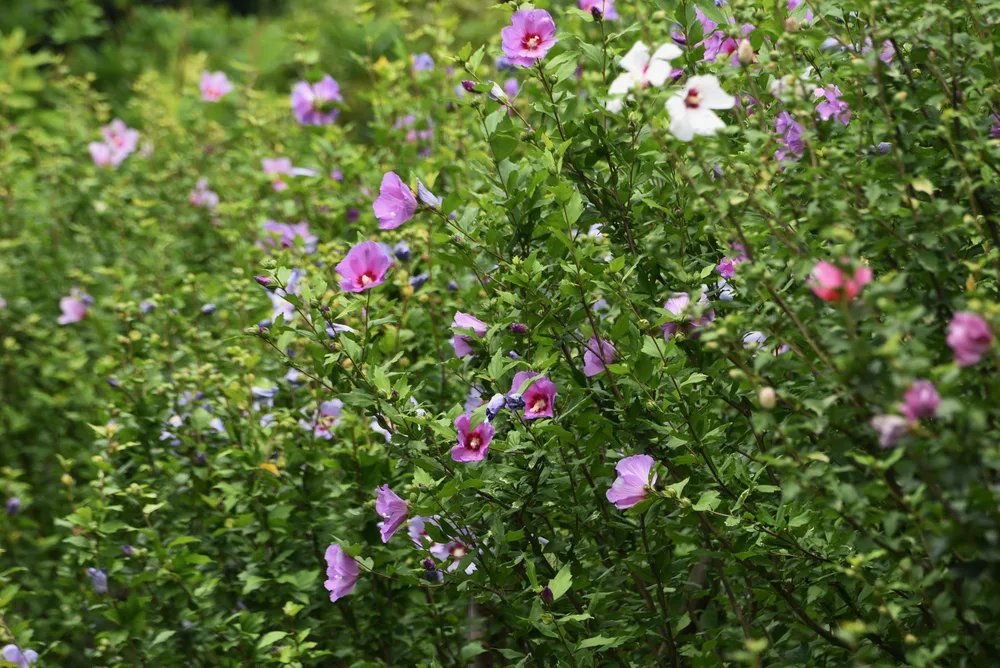
Rose of Sharon, or common hibiscus, is another garden favorite with its stunning, interesting flowers. These flowers can be white, light blue, and even lavender.
Growing best in zones 5-9, this shrub does well in most hot conditions and can be drought tolerant. It isn’t too fussy about soil, so long as it drains well, making it ideal for sandy soil conditions.
8. Bigleaf Periwinkle
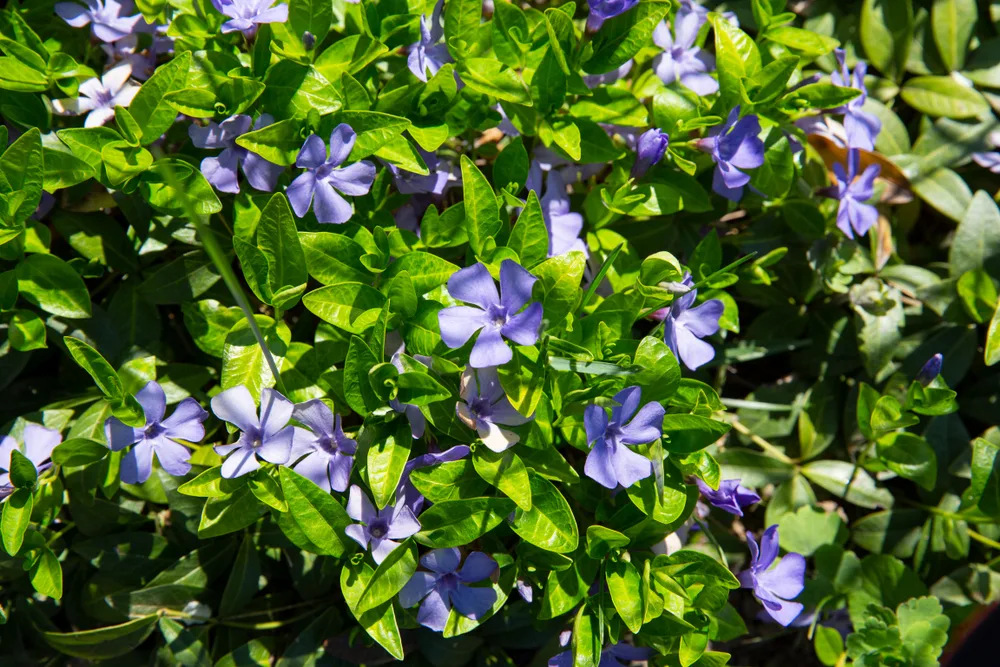
You will most likely recognize these deep blue or violet flowers in many gardens. Bigleaf periwinkle is slightly bigger than common periwinkle and does well in temperate climates (Zones 4-9). It’s an extremely easy plant to care for and can withstand clay soil conditions, as long as the soil is not too compacted.
This is a ground covering plant, needing plenty of space to spread out. It can be invasive to other plants, so it’s best to plant periwinkle on its own. It can survive in full sun or shade, making this an easy choice for many gardeners with clay soil in odd spaces. Light watering is needed for this low-maintenance plant.
9. Black-Eyed Susan (Rudbeckia Hirta)
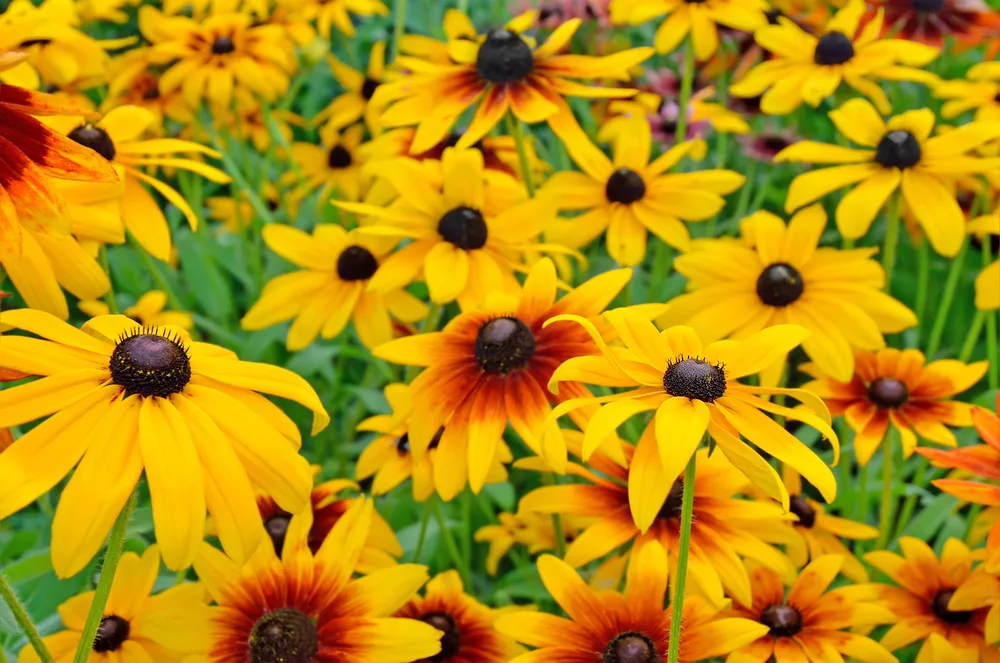
Black-eyed Susans are a welcomed plant in many gardens. Its bumble bee-like flowers are comforting and joyous. This low-maintenance plant loves poor soils and does well in clay soils if it drains relatively well.
Once established, they’ll tolerate drought-like conditions and thrive in full sun. It’s not a cold-hardy perennial and needs warmer temperatures or protection in winter to flourish.
10. Butterfly Weed (Asclepias tuberosa)
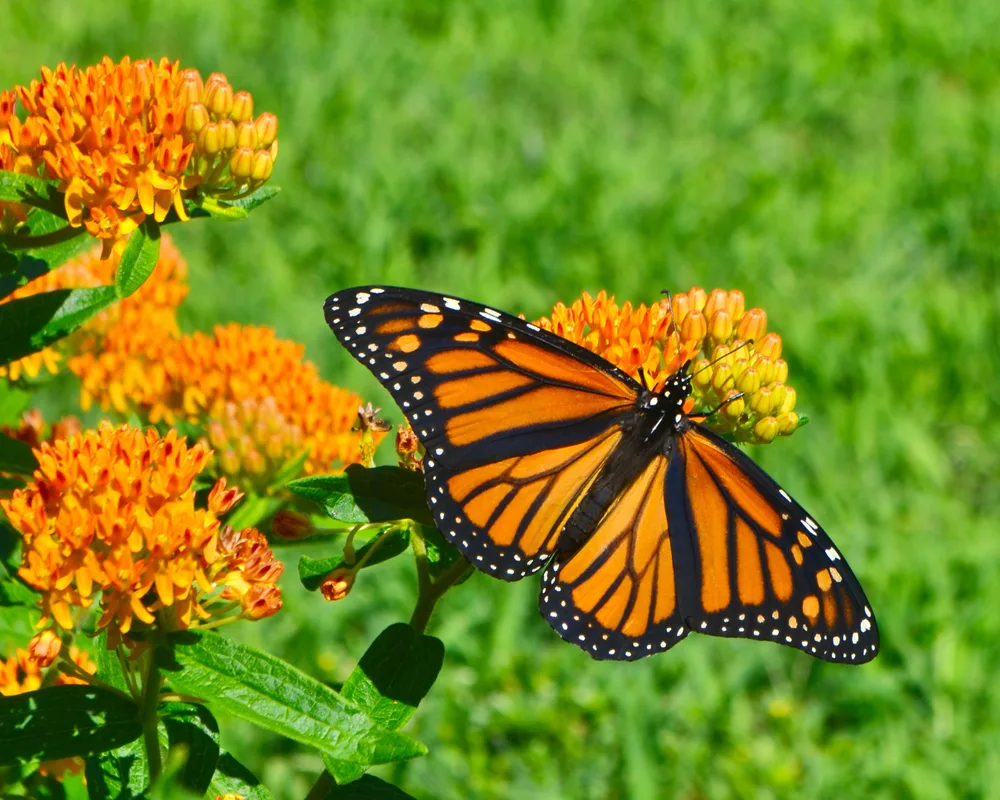
Butterfly weed is a worry-free addition to your garden and an absolute must-have for butterfly lovers. The bright yellow-orange flowers attract its namesake insect, along with many only pollinators, including hummingbirds.
While some shade is fine, full sun for most of the day a must for this brilliant plant. It grows in USDA zones 3-9, meaning it grows well in most climates and is drought tolerant. Soil is not an issue for this milkweed relative either. It can grow in dry, sandy soil and requires little water once established in your garden.
11. Cup Plant
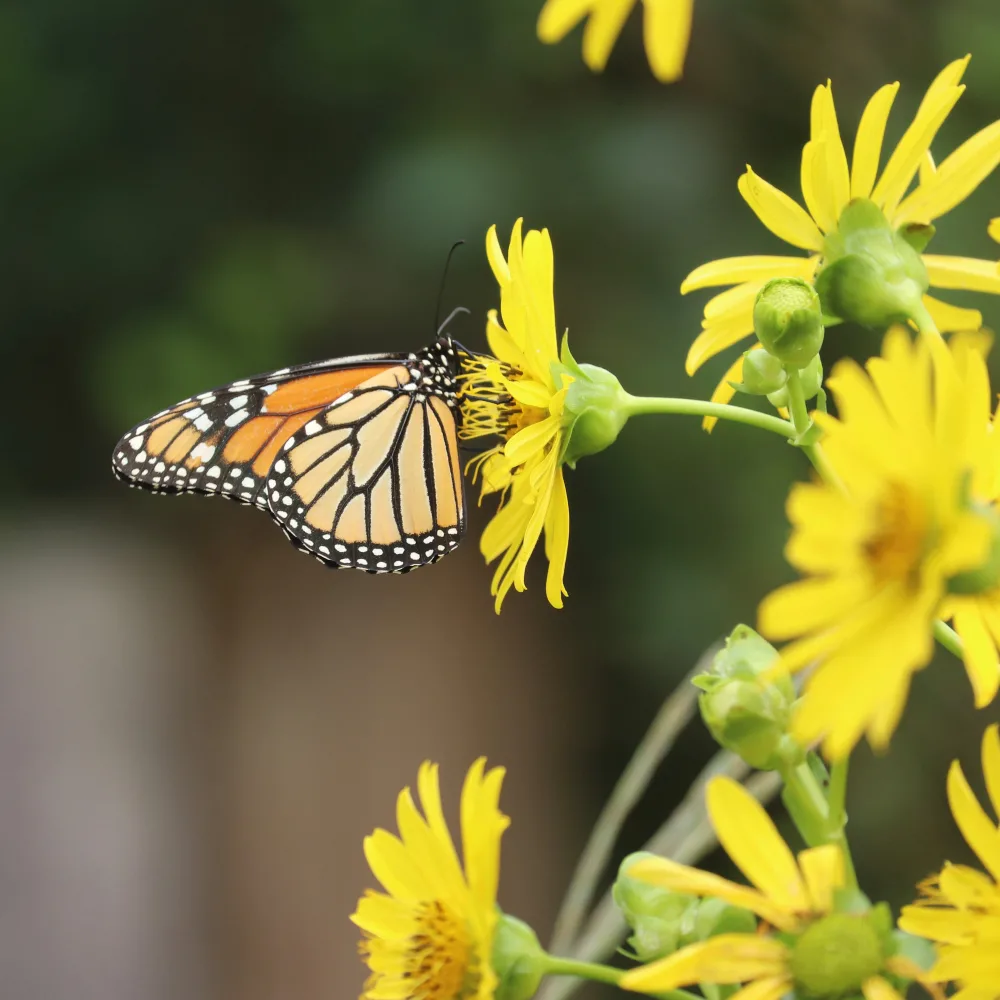
If you’re wanting butterflies, but clay soil is your problem, cup plants may work for you. Their bright yellow blooms are similar to sunflowers and they can grow just as tall.
Cup plants grow in a variety of regions and thrive in zones 3 – 9. It requires full sun for optimal growth and regular watering. It does well in many types of soil, but grows best in rich, clay soils due to the water retention capabilities.
12. New York Ironweed (Vernonia noveboracensis)
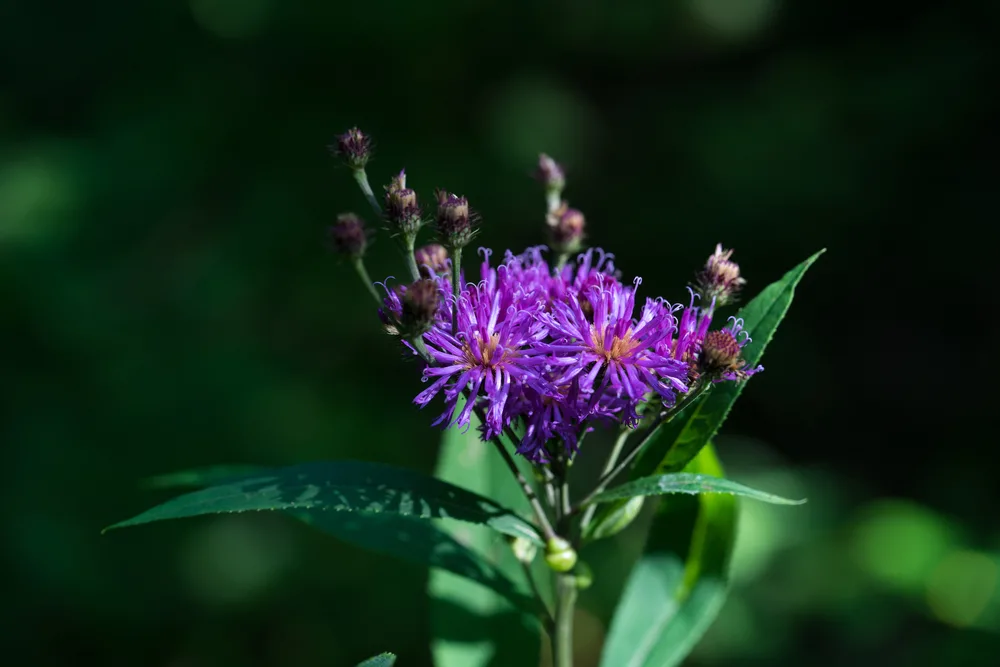
Another clay-loving plant is the New York ironweed. This wildflower grows small gorgeous violet flowers in clusters and grows in wet and damp areas. They require full sun but accept partial sun too.
Due to their wild flowering nature, they can tolerate many different soils, but they do well in clay soils as they’re quite thirsty plants. Ironweed grows between zones 5 and 9 and can handle high heat and humidity.
13. Autumn Joy Sedum
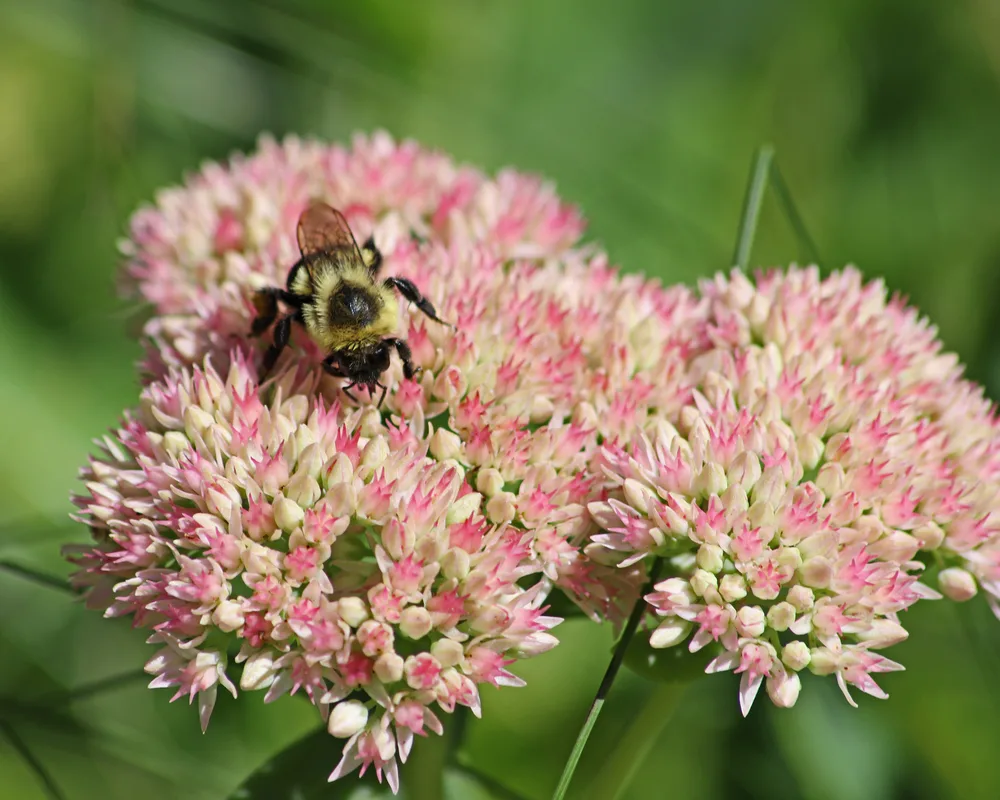
Autumn joy sedums, or stonecrops, are a hybrid perennial plant that many gardeners obsess over. Its well-known bright pink clustering flowers add charm to any garden.
They need full sun in order to produce many flowers and require very little water. Too much water will quickly lead to root rot. Autumn joy sedums will therefore thrive in that sandy spot in your garden.
They do well in hot climates and even tolerate extreme heat. Cooler climates are no issue for this plant either, perfect for USDA zones 3 to 9.
14. Tickseed (Coreopsis)
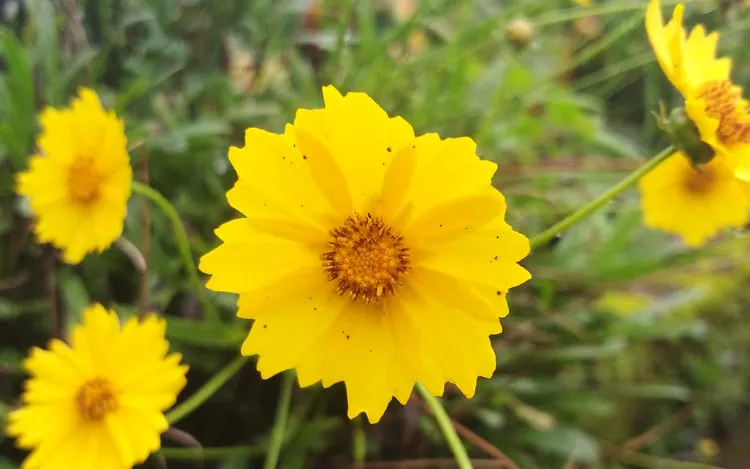
Yet another perennial that is drought tolerant and hardy is tickseed. The cute daisy-like flower comes from a variety of species and blooms in many different colors – including red, white, and yellow. Tickseed does well in a wide variety of climates, in zones 3 all the way through to 10.
Full sun is an absolute must for this plant, especially if you’re wanting full blooms. It isn’t very fussy about soil, as long as water drains well. Tickseed will therefore thrive in your sandy soil spot. Regular watering during cooler times of the day is recommended. Otherwise, this is an easy-growing, low-care plant that is long blooming.
15. Purple Coneflower (Echinacea purpurea)
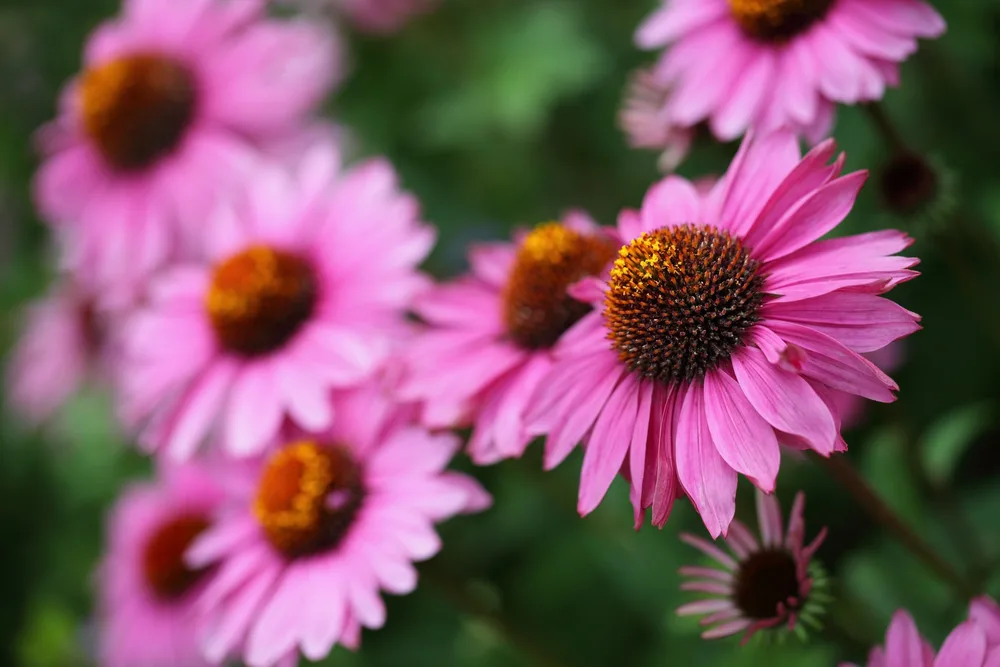
Purple coneflowers are arguably the favorite member of the coneflower family. Their purple-pink flowers add character to any garden and their hardiness makes them a must for gardens will low-quality soil.
They grow in USDA zones 3-9, tolerating a variety of climates. However, high humidity, heavy rains, and cold are not ideal for Coneflowers. Full sun is needed, along with regular watering. Once they’ve established themselves in your garden, they do become more drought tolerant. They also require decent drainage, making them a great choice for sandy soil gardens.
Low-quality soil is understandably headache-inducing, especially if you’ve thrown everything at it and nothing seems to work.
These 15 plants are a great way to utilize that stubborn spot in your garden. They’ll increase diversity in your garden and many hold several benefits, including attracting pollinators. You definitely won’t regret adding them to your landscape.

Get the famous Rural Sprout newsletter delivered to your inbox.
Including Sunday musings from our editor, Tracey, as well as “What’s Up Wednesday” our roundup of what’s in season and new article updates and alerts.

